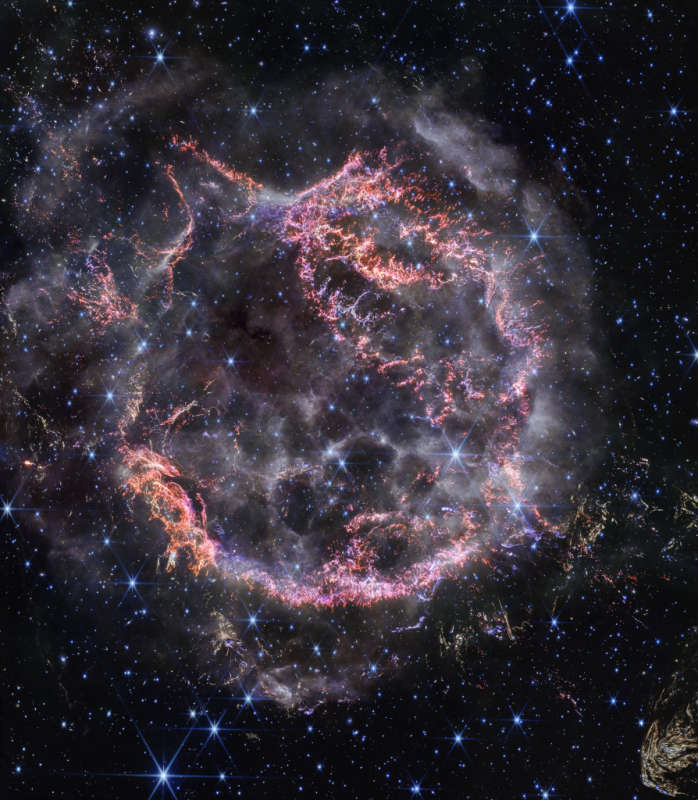Credit & Copyright: NASA,
ESA,
CSA,
STScI;
D. Milisavljevic (Purdue University),
T. Temim (Princeton University),
I. De Looze (University of Gent)
Explanation:
Massive stars
in our Milky Way Galaxy live spectacular lives.
Collapsing from vast cosmic clouds, their nuclear furnaces
ignite and create heavy elements in their cores.
After only a few million years for the most massive stars, the
enriched material is blasted
back into interstellar space where star formation can begin anew.
The expanding debris cloud known as Cassiopeia A is an example
of this final phase of the
stellar life cycle.
Light from the supernova explosion that created this remnant
would have been first
seen in planet Earth's sky
about 350 years ago,
although it took that light 11,000 years to reach us.
This
sharp NIRCam image
from the James Webb Space Telescope
shows the still hot filaments and knots in the supernova remnant.
The whitish, smoke-like outer shell of the expanding blast wave
is about 20 light-years across.
A series of light echoes
from the massive star's cataclysmic explosion are also
identified
in Webb's detailed images
of the surrounding interstellar medium.
1999 2000 2001 2002 2003 2004 2005 2006 2007 2008 2009 2010 2011 2012 2013 2014 2015 2016 2017 2018 2019 2020 2021 2022 2023 2024 2025 |
Январь Февраль Март Апрель Май Июнь Июль Август Сентябрь Октябрь Ноябрь Декабрь |
NASA Web Site Statements, Warnings, and Disclaimers
NASA Official: Jay Norris. Specific rights apply.
A service of: LHEA at NASA / GSFC
& Michigan Tech. U.
|
Публикации с ключевыми словами:
Cas A - supernova remnant - остаток Сверхновой
Публикации со словами: Cas A - supernova remnant - остаток Сверхновой | |
См. также:
Все публикации на ту же тему >> | |
